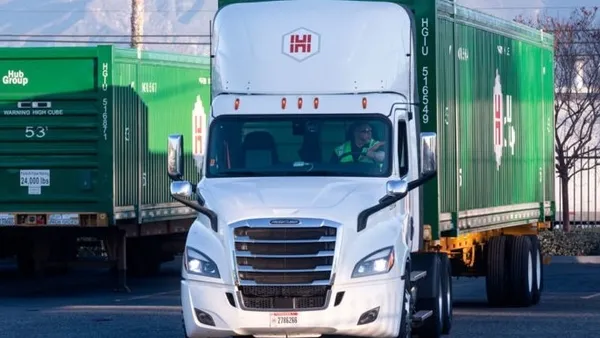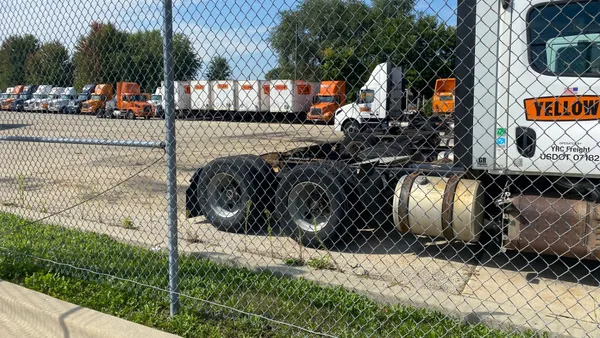Dive Brief:
- ABF Freight’s weight per shipment hemorrhaged 11% year over year in Q3, which parent company ArcBest Corp. CFO Matt Beasley blamed on broad industrial weakness during an earnings call Friday.
- The drop in weight per shipment caused a 23% decline in ABF’s unadjusted operating income as customers produced less in a challenging economic environment, Beasley said.
- “Additionally, higher interest rates and low housing inventory have led to fewer household goods moves, which typically involve heavier shipments,” the CFO said.
Dive Insight:
ABF Freight is retaining customers, but particularly in September, trucks too often collected only two pallets per stop, instead of three or more.
“Just smaller shipment size when we’re coming ... to pick them up,” the CFO said.
Three or more skids per stop — and more weight on each one — is a target for carriers beyond ABF Freight. TFI International CEO Alain Bédard shared the same priority on the TForce Freight parent company’s earnings call.
“We get, on average, two shipments per stop,” Bédard said. “So we have to move to three, right, on average.”
ABF Freight acknowledged shipments it picked up following Yellow Corp.’s bankruptcy have shifted elsewhere. Some of the industrial shipments from Yellow were project-related, while it lost others to other providers over the past year, Beasley said.
LTL carriers have handled more retail shipments than usual in their networks as they await an industrial demand rebound — a trend that continued in Q3, executives have said in earnings calls and interviews.
The retail sector is presenting challenges of its own: Some higher-weight LTL shipments have shifted to the truckload market as customers such as Walmart consolidate orders into full trailers to take advantage of lower TL rates and more excess capacity.
Rather than fight the trend, ArcBest is using its managed transportation division to assist customers that want to follow suit, said Christopher Adkins, VP of yield strategy and management.
“We’re able to help optimize our customers’ supply chain by bundling some LTL shipments into truckload,” Adkins said. “There’s some mode optimization going on in the network or, really, in the industry. As the market turns, you could see some of that business transition back from truckload to LTL.”














